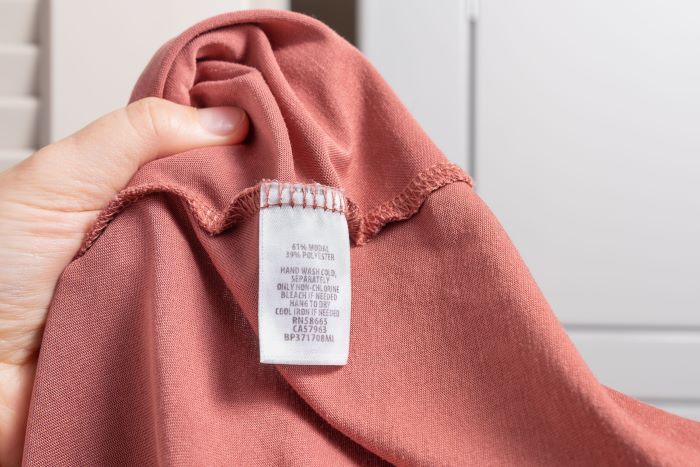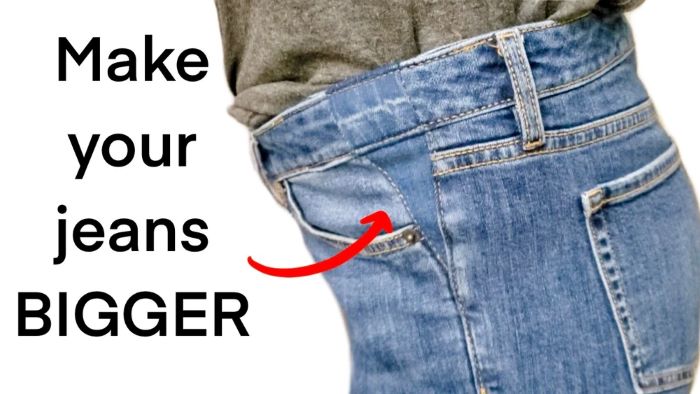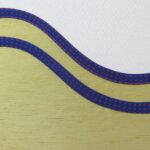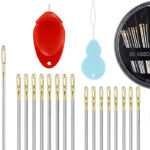Are you struggling to find the perfect fit of pants for your body type? Do your pants always seem too tight or too loose, leaving you feeling uncomfortable and unconfident?
If so, then you may be wondering if a tailor can help fix the problem. The good news is, a skilled tailor can indeed make your pants bigger or smaller to fit your body perfectly. In this article, we will explore different possibilities a tailor can use to make your pant bigger or smaller.
Can a tailor make pants bigger? Yes, a tailor can make pants bigger or smaller. Depending on the specific alterations needed, a tailor can adjust the waistband, crotch, seat, thighs, and leg openings of pants to achieve the desired fit.
It’s important to note that altering or stretching pants can only provide a limited increase in size. If you need a significant increase in size, it’s best to purchase pants in a larger size.
Fabric or material of your pants: Consider the fabric of your pants. Some fabrics are easier to alter than others. For example, jeans are made of thick denim and may require more effort to alter than pants made of a thinner material like cotton or rayon.
Follow the instructions on the product carefully to avoid damaging the fabric.

Check the seam allowances of your pants. If there is extra fabric in the seams, the alteration becomes easier. There will be no need for extra fabric to be added to increase the size of the pants.
Determine if your waistband can be easily let out. Some waistbands have extra fabric that can be let out to make the pants bigger. However, if the waistband is already stretched to its limit, this may be a tough task for a tailor.
Check the size of your pants. If they are only slightly too small, you may be able to stretch them out by wearing them or using a pants stretcher. However, if they are significantly too small, you may need to add fabric to make them larger.
If you are not confident in your ability to alter your pants yourself, consider taking them to a professional tailor or seamstress. They can help you determine the best course of action and make the alterations for you.
Consider the style of your pants. If they have a lot of pockets, zippers, or other embellishments, it may be more difficult to alter them without affecting the overall look of the pants.
Yes, it is possible to make pants bigger at the waist by stretching them. This method is most effective for pants made of stretchy fabrics, such as spandex or elastane blends. To stretch your pants at the waist, you can follow these steps:
Step 1. Wet the waistband: Soak the waistband of your pants in warm water. This is to make the fibers more flexible.
Step 2. Stretch the waistband: Pull the waistband of your pants as far as it will go. You can use your hands or a pants stretcher to help with this.
Step 3. Let the pants dry: Leave your pants to air dry while still stretched. This will help the fiber set in its new shape.
Step 4. Repeat if necessary: If your pants are still too tight, you can repeat the process a few more times until you achieve the desired fit.
| Pros | Cons |
|---|---|
| Works well for stretchy fabric such as Pandex | Does not work for non-stretchy fabric |
| No extra tool is required for stretching | Excessive force while stretching could tear the fabric |
| Less expensive and easy to do | Can cause uneven stretch if not done properly |
| Stretching is not a permanent solution |
Table: Pros and Cons of stretching the pants
This method may not work for pants made of non-stretchy fabrics, such as denim or cotton. In these cases, it may be necessary to let out the waistband or add fabric to make the pants bigger.
It is also important to be gentle when stretching your pants, as excessive force could cause them to tear or become misshapen.
Here is a list of different methods that your tailor can use to make pants bigger. The tailor can choose an appropriate method depending on the size of your pant. If it is not too small then it can be made bigger without using a sewing machine.
| With sewing | Without sewing |
|---|---|
| Adding elastic waistband | Button waist extenders |
| Inseam lengthen | Spray bottle (Fabric stretching spray) |
| Involving extra fabric at side seams | Bathtub (Sock in warm water method) |
| Expanding seam allowance | Steaming method |
| Adjusting the crotch of your paint | Waistband stretcher |
Table: Different methods to make your pants bigger
Yes, there are a few ways to make pants bigger without the help of a tailor. Some simple methods that you can follow are discussed below.
Yes, you can alter the pants at home if you have a sewing machine but you should brace yourself for results that are not perfect.
- Stretch the pants manually using spray bottles
- Use a hot water soak
- Bathtub
- Use a hairdryer
These methods may not work for you on all types of pants or fabrics. There’s always a risk of damaging your fabric if you’re not careful.
If you’re unsure or don’t feel comfortable trying these methods yourself, it’s best to seek the help of a professional tailor.
To can make your pant bigger by replacing your regular waistband with elastic waistband pants. If you have a sewing machine I highly encourage you to do this yourself. The method is briefly explained in three simple steps.
To make the pant bigger first remove the waistband from the back and sides of your pants.
Prepare three pieces of extra fabric for the pants. Two parts of triangular shape and one of rectangular shape.
The triangular shapes are added on the sides of the pants. The rectangular shape is added to the back of the pants.
Follow the steps below for a detailed method.
Step 1: In the first step remove the belt loops first and then the waistband on the back side of the pants. To remove the belt loop and waistband you can use a blade or seam ripper. Mostly chain stitch is used in the waistband so it is very easy but tricky to remove. Be careful and very gentle while using a blade that could damage the stuff if not used with care.
Choose a fabric that matches or complements the color and texture of your pants. Make sure it’s a similar weight and stretchiness to the existing fabric.
Step 2: If you are going to add an elastic waistband then the adjustment of crotch depth is also important. If you are going to increase the size of your pants by 2 to 3 inches then crotch depth adjustment is compulsory.
Using a seam ripper open the side of your pants. Before opening the seam measure the crotch depth.
Try on your pants again to ensure the fit is now comfortable. Make any necessary adjustments.
Once you’re happy with the fit, trim any excess fabric, and finish the raw edges with an overlocker or a zigzag stitch to prevent fraying.
Step 3: Try on your pants and determine where you need more room. Mark the area with a pin or chalk.
Measure the depth of the crotch depth using measuring tape or any other gadget you use. After measuring the depth use measurements to cut two triangles for each side. Don’t forget to keep the seam allowance on top bottom and on sides.
Keep seam allowance a bit bigger than pants seam allowance. This will help to make further alterations if required.
Use cotton interfacing to reinforce the piece of fabric you are going to add on the sides and back (in the waistband) of your pants. Keep the size of the interfacing a little smaller than the size of the fabric.
Step 4: Prepare your sides to insert the pieces. Insert the triangle-shaped pieces of fabric on both sides of the pants. Remember to keep the size of both triangles the same.
Step 5: Now mark the center of the waistband on the back. Cut the waistband into two pieces at the center.
Prepare a piece of fabric to insert into the waistband on the back. The desired size of pants depends upon the size of the fabric inserted. So carefully choose the size of the fabric before inserting it.
Tip: You can open the side seam a little further for easy insertion of an extra piece of fabric on the sides.
Cons:
- The same color and type of fabric needed
- If the fabric of the same color is not used it may look fake
- It does leave exposed stitching and a triangle of extra fabric added
- Don’t forget to keep seam allowances
- Iron flat all the seams for perfect finishing and the perfect look
- Use a cotton interfacing to reinforce the extra piece of fabric
- Once the waist is made bigger, the seat of the pants may also need adjustments.
This is an effective way to increase the size of your pants. In this way, the tailor will replace your original waistband with a new elastic waistband.
Some methods of enlarging your pants are even more confusing than the method above. However, you can make these methods work for you in order to enlarge your pants.
In this case, you may have a more complicated situation, so it will be better to consult a professional to decide how to proceed.
If your pants have 2 to 3 inches of seam allowance then no need to add extra fabric. Just move the seams of the pants out and increase the size of the pants. This is one of the quickest and easy ways to increase the size of pants.
With a little experience in sewing, you can do this by yourself. I highly encourage you to do this by yourself.
The answer is yes. A tailor can increase the size of your pants at the inseam length. By following the following steps below you can do this by yourself at home. I will encourage you to do this at home if you have a sewing machine with you.
Yes, a tailor can increase the inseam length of your pants. Here is a step-by-step procedure that a tailor might follow to lengthen the inseam of your pants:
Step 1: In step 1 determine how much length is needed. The tailor will have you try on the pants and measure the current inseam length. In this way, he will determine how much length needs to be added.
Step 2: Use a seam ripper to remove all the seams along the inseam length. This will help to add extra fabric to the inseam. This extra fabric will increase the size of the pants.
Step 3: The most important and crucial stage is to choose the fabric. The tailor will choose a matching fabric to add to the inseam. This fabric should be similar in weight and color to the original fabric. If not correctly chosen you may not get the perfect fit.
Step 4: Measure and mark the inseam. The tailor will carefully measure and mark the inseam of the pants to ensure that the added length is even on both legs.
Step 5: Sew the fabric. The tailor will sew the matching fabric on the inseam of each pant leg using a sewing machine or by hand. The sewing machine stitching is recommended for perfect finishing.
Step 6: Finish the seams: Once the fabric has been attached, the tailor will finish the seams to prevent fraying and ensure that the added fabric is secure.
Step 7: Press the seams: The tailor will press the seams to create a smooth, polished finish.
The tailor will have you try on the pants again to ensure that the new inseam length fits properly and that you are comfortable in the pants.
Overall, lengthening the inseam of pants requires precision and attention to detail to ensure that the final product looks seamless and fits well. A skilled tailor will be able to make these adjustments while preserving the overall appearance of the pants.
What is the crotch? The crotch is the length from the waist to the chair on which you are sitting. A skilled tailor will be able to make these adjustments while preserving the overall appearance of the pants.
Adjusting the crotch of your pants is a common alteration that can improve the overall fit and comfort of your pants. Here are the general steps a tailor may follow to adjust the crotch of your pants:
Step 1: First of all the tailor will determine the fit. The tailor will have you try on the pants and assess the fit around the crotch area. They will look for signs of tightness or looseness.
Step 2: The tailor will mark the adjustments. The tailor will mark the areas where adjustments need to be made using fabric chalk or a similar marking tool.
The tailor may need to unpick any existing seams in the crotch area to access the fabric more easily.
Step 3: Make the adjustments: Depending on whether the crotch is too tight or too loose, the tailor will either let out or take in the seam, add or remove fabric from the area, or adjust the position of the seam.
Step 4: Re-sew the seam: Once the adjustments have been made, the tailor will carefully re-sew the seam using a matching thread to ensure the finished product looks seamless.
Step 5: Trim and finish: If any excess fabric is removed during the adjustment process, the tailor will trim it away and finish any raw edges to prevent fraying.
The tailor will have you try on the pants again to ensure that the crotch now fits properly and that you are comfortable in the pants.
Once the fit has been approved, the tailor will press the seams and finish the pants to give them a polished, professional appearance.
The article that you may read How to hem shorts with the sewing machine.
There are many different methods that a tailor can use to make your pants smaller or bigger. Some common methods that he can use to alter your pants are explained briefly below.
The answer to this question is yes, a tailor can make your pants bigger without sewing. You can also do this at home. Making pants smaller is much easier than making them bigger. The methods to smaller your pants are easy to follow.
- Taper the pant length (Easy and cheap)
- Add suspenders (Easy, quick, and cheap)
- Crotch adjustment (Expensive)
- Reduce pants to your desired size (Expensive)
- Remove pleats (Expensive)
- Waistband too high (Expensive, lot of work needed)
- Can a tailor make pants bigger without sewing
Button waist extenders are easily available in the market. You can buy one to make your pants smaller.
Choose the right size extender for your pants. Button waist extenders come in different sizes, so make sure you choose one that matches the button size on your pants.
Tip: If your pants or skirt are still too tight, you can use multiple button waist extenders to add even more room to the waist.
Making pants smaller using a spray bottle is a quick and easy way to adjust the fit of your pants. This method may not work for all types of pants. This is not a permanent solution to your problem. The pants may stretch back out over time.
Step 1: Fill a spray bottle with water. You can use tap water or distilled water.
Step 2: Put on your pants and identify the areas that need to be tightened. Spray those areas generously with water. Be sure to spray both the inside and outside of the pants.
Step 3: Use a hair dryer or a clothes dryer to dry the wet areas. If using a hair dryer, set it on a high heat setting and hold it about six inches away from the fabric.
Move the dryer around until the fabric is dry. If using a clothes dryer, put your pants in the dryer on a high heat setting for about 10 minutes.
Check the fit. If your pants are still too loose, repeat the process until you achieve the desired fit.
If you need to make your pants smaller, you can try using the bathtub soaking method. As discussed above this method may not work for all types of pants because each material is not shrinkable.
Step 1: Fill a bathtub with warm water. Make sure there’s enough water to cover your pants. If pants are not completely socked in the water, you may experience uneven shrinking.
Step 2: Put on your pants and get into the bathtub. Sit in the water for 15-20 minutes to allow the fabric to soak.
Step 3: After soaking, get out of the bathtub and let the excess water drip off the pants. Do not wring them out.
Step 4: Place the pants in a washing machine and run a spin cycle to remove more water.
Step 5: Hang the pants to dry. Make sure they are not in direct sunlight, as this can cause the fabric to fade. Repeat the process until you get the desired results.
- Use warm water
- Make sure that the pants are fully socked
- Don’t dry in direct sunlight
If you need to make your pants smaller, you can try using a steaming method with a handheld steamer or an iron with a steam setting. The same is true for this method. This method may not work for all type of fabrics. It is best to test on a small area before trying this method.
This is also not the permanent or final solution to the problem. You may face the same issue after some time. If you want a permanent solution then you must go with permanent solutions.
- Put on your pants and identify the areas that need to be tightened.
- Hang your pants on a hanger or lay them flat on an ironing board.
- Fill the handheld steamer or iron with water and turn it on to the steam setting.
- Hold the steamer or iron close to the fabric and steam the areas that need to be tightened. Be sure to steam both the inside and outside of the pants.
- After steaming, use your hands to gently pull and stretch the fabric in the opposite direction of the way it shrunk. This will help to reshape the fabric and prevent it from becoming misshapen.
- Hang the pants to dry. Make sure they are not in direct sunlight, as this can cause the fabric to fade.
- Check the fit. If your pants are still too loose, you can repeat the process until you achieve the desired fit.
If you need to increase the size of your pants, you can use a waistband stretcher, which is a handy gadget designed for stretching the waist of pants. This is easily available in the market. The waistband stretcher comes in different sizes.
- Choose the right size stretcher for your pants. Waistband stretchers come in different sizes, so make sure you choose one that matches the waist size of your pants.
- Insert the waistband stretcher into your pants. The stretcher should be inserted through the waistband and into the legs of the pants.
- Adjust the size of the stretcher to stretch the waist of your pants. Most stretchers have adjustable knobs or levers that can be turned or adjusted to increase the size of the stretcher and stretch the waist of your pants.
- Let the pants sit for a few hours or overnight with the stretcher in place. This will allow the fabric to stretch and conform to the shape of the stretcher.
- Remove the stretcher and check the fit of your pants. If your pants are still too tight, you can repeat the process until you achieve the desired fit.
- Be careful not to over-stretch the fabric, which can cause the waistband to become misshapen or damaged.
- Overstretching could damage the seams
- If the fabric of your pant is not stretchable then don’t use this method
The article that you must read: How to transfer thread from cone to spool.
The cost of alteration depends upon the type of alteration. The cost of alteration changes from simple to complex alteration. Simple tasks will cost you less than complex tasks. Before visiting your tailor you must have an idea of the cost.
| Up to $30 | Inseam alteration (lengthen or shorten) Waist alteration for perfect fitting Crotch too tight or roomy Adding suspenders Taper the pants leg |
| About $50 | Line up the cruisers of the pants Change the waistband for a new belt loop |
| Above $100 | Remove and replace the waistband Remove pleats |
When it comes to shopping for pants, there are several factors to consider, such as fit, style, and material.
It can make a big difference in how you look and feel to choose the right pants.
There are many different types of flooring available.
Before buying pants, it’s important to know your measurements. Measure your waist, hips, and inseam for the most accurate fit.
Different brands and styles of pants can have different sizing, so knowing your measurements can help you choose the right size.
When buying pants, consider the occasion you will be wearing them. If it’s a formal event, such as a wedding or business meeting, you may want to opt for dress pants.
For a casual occasion, such as a weekend brunch or running errands, you may prefer jeans or khakis.
The fit of your pants can make a big difference in how you look and feel. There are three basic types of fits: slim, regular, and relaxed.
Slim-fit pants are tapered and hug the body, while regular-fit pants have a straighter cut. Relaxed-fit pants are looser and more comfortable.
Choose the fit that is most comfortable for you and suits your personal style.
The material of your pants can affect how they feel and how they look. Cotton is a breathable and comfortable option for casual pants, while wool is a warm and durable option for dress pants.
Denim is a classic material for jeans, while synthetic blends can provide added stretch and durability.
Pants come in various styles, such as bootcut, straight-leg, and tapered.
Bootcut pants have a slight flare at the bottom.
Straight-leg pants have a consistent width from hip to ankle. Tapered pants are narrower at the ankle than at the hip. Choose the style that suits your body type and personal preference.
When buying pants, pay attention to the details. Look for well-sewn seams, good-quality zippers, and well-finished hems.
The details can make a big difference in how long your pants last and how good they look.
Finally, always try on pants before buying them. Sizes and fits can vary, and what looks good on a hanger may not fit well on your body.
Trying on pants can ensure that you get the best fit and style for you.
Tight pants are often associated with a more stylish and modern look. They are commonly worn by both men and women for both casual and formal occasions.
Tight pants can be flattering, they can also be uncomfortable and restrict movement.
- Stylish: Tight pants can make a statement and create a sleek, modern look.
- Flattering: They can highlight your curves and create a more defined silhouette.
- Versatile: Tight pants can be dressed up or down, making them a great option for both formal and casual occasions.
- Uncomfortable: Tight pants can be constricting and make it difficult to move comfortably.
- Unflattering: They can also highlight any areas you may be self-conscious about, such as a muffin top or love handles.
- Not suitable for all body types: Tight pants may not be flattering for all body types and can make some people feel self-conscious.
Loose pants, on the other hand, are a more comfortable and relaxed option.
They are commonly worn for casual occasions and are often made from lightweight materials such as cotton or linen.
- Comfortable: Loose pants provide more freedom of movement and are less constricting than tight pants.
- Breathable: They are often made from lightweight materials that allow for air circulation, making them a great option for hot weather.
- Forgiving: Loose pants can be forgiving on certain body types and hide any problem areas.
- Less formal: Loose pants are not typically worn for formal occasions and may not be suitable for a dressier dress code.
- Not as flattering: Loose pants can make you look boxy or shapeless, which may not be as flattering as tighter pants.
- Limited styling options: They can be difficult to dress up, which may limit their versatility.
In conclusion, it’s important to understand that there are two different kinds of alterations that a tailor can make: the first is simply changing the size of the pants, and the second is adjusting the fit of the pants. A tailor can adjust the size of the pants by taking them in or out, which is known as “shaping.” He or she can also take in the waistband to make it wider or narrower. A tailor can also make the pants fit better by taking in the crotch and/or the seat. When a customer has a pair of pants that are too big or too small, he or she may ask for an alteration.
When someone buys a pair of pants, they often buy them without being fitted. This means that they don’t know how their body fits into the pants. A tailor can help customers determine if the pants fit correctly. If someone has a pair of pants that fit perfectly, he or she should let the tailor know.
A tailor can adjust the waistband, crotch, seat, thighs, and hem. If you have a sewing machine and little experience in sewing then you can do this by yourself. The recommendation is to visit your tailor for alteration. You can ruin your favorite fabric.
When you try on a pant, you should be able to bend your knees and don’t restrict your movement.
The pants should sit comfortably at your waist, without being too tight or too loose. They should also be the right length, ending at the top of your shoes without any bunching or dragging on the ground.
The common alterations made by the tailor are as follows. You can ask your tailor for any of these alterations.👉 Hemming the pants👉 Adjusting the waistband👉 Shortening or lengthening the sleeves👉 Taking in or letting out the jacket👉 Adjusting the shoulders👉 Tapering the pants
👉 Shortening at the inseam










